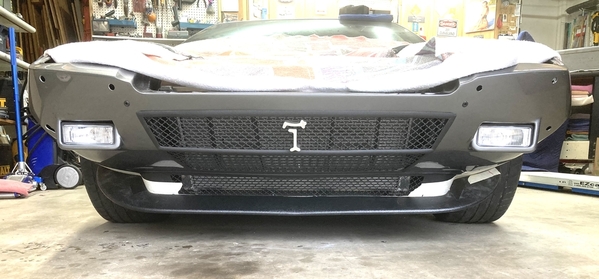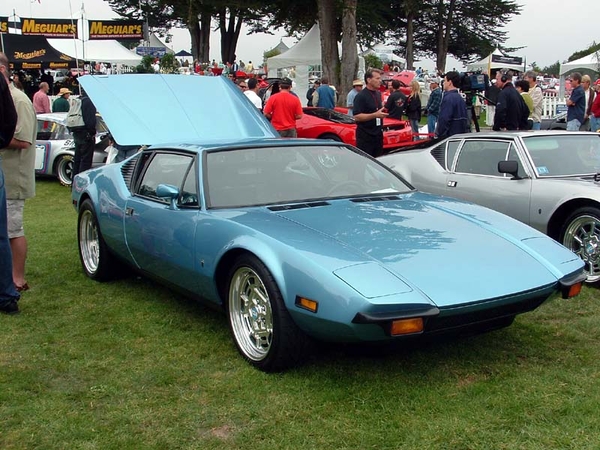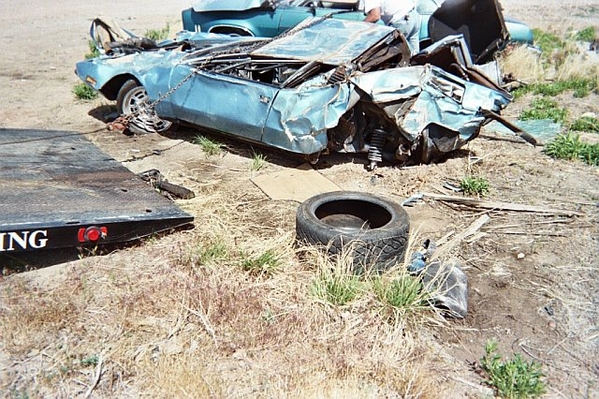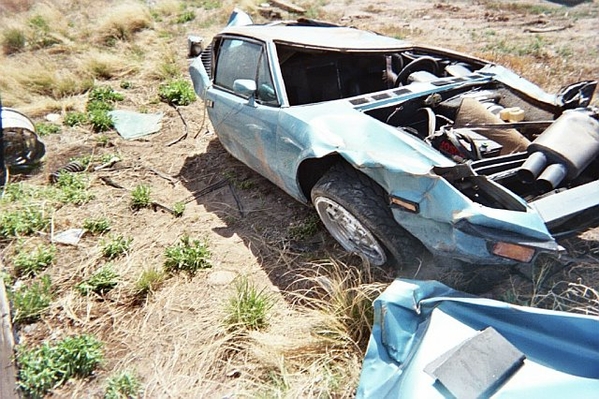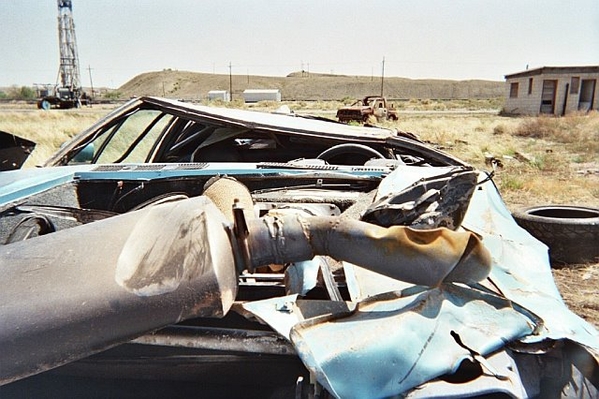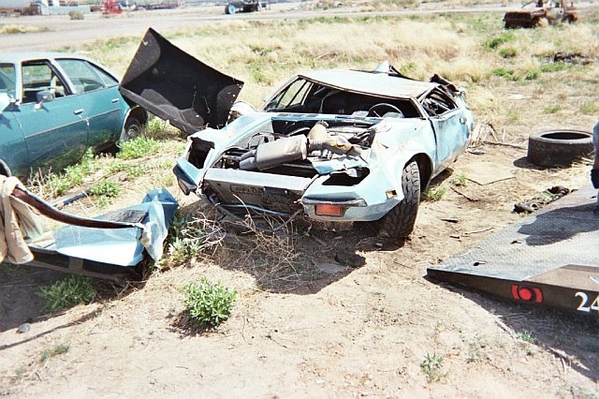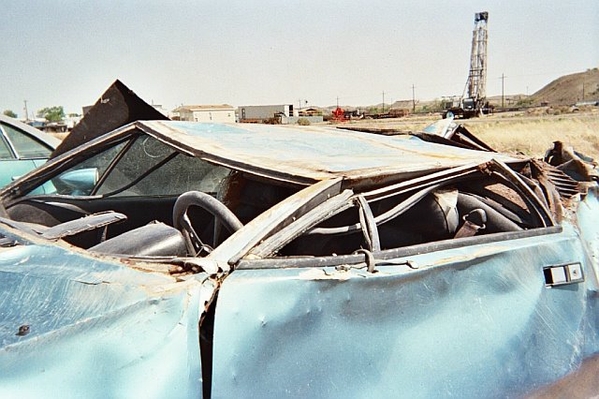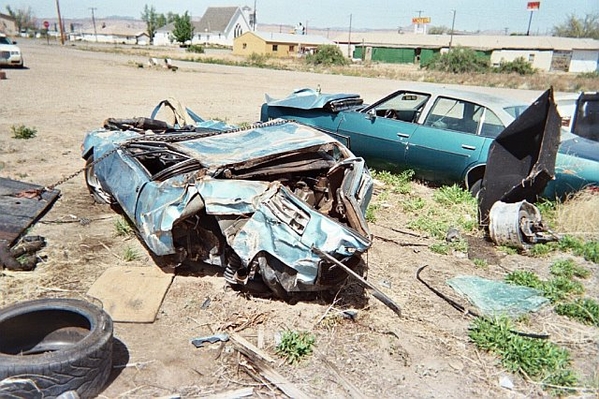I went out to the Anza Berrago Desert here San Diego area this morning for a test drive due to the beautiful weather were having. There is a grade that goes to the desert floor called Montezuma Grade that has 9 miles of semi fast twisties that I have been riding sport bikes up and down for decades. This is one of my favorite high speed blasting spots due to you can see whats coming for miles ( CHP and crazy people like me ) because it's on the side of a desert mountain. My car has new stock ( 37 years old ) shocks, poly bushings, tie rod ends and ball joints. I was amazed how good the car cornered and how well the stock brakes worked until I really got them really hot, still this 51 year old car is no fat pig. One thing that got me attention was at north of 140 MPH there is a long section of road that has some gradual long dips ( they don't seem that long at speed ) that when the suspension unloading or rebounding the car wanted to exit stage left, I semi pooped my pants. What could be causing this? One more thing, my windshield trim got a little loose. I don't see any clip, how do I secure this? Pics below.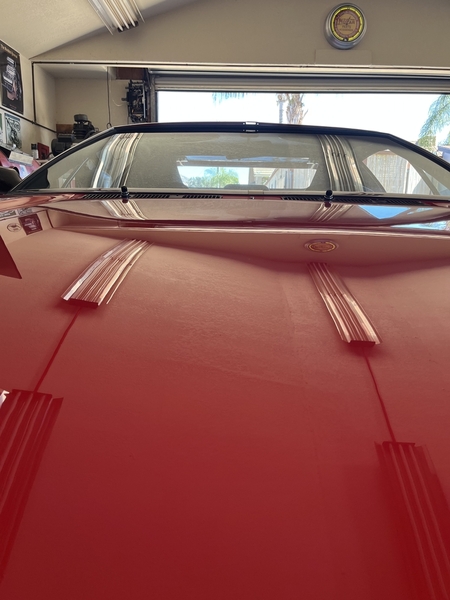
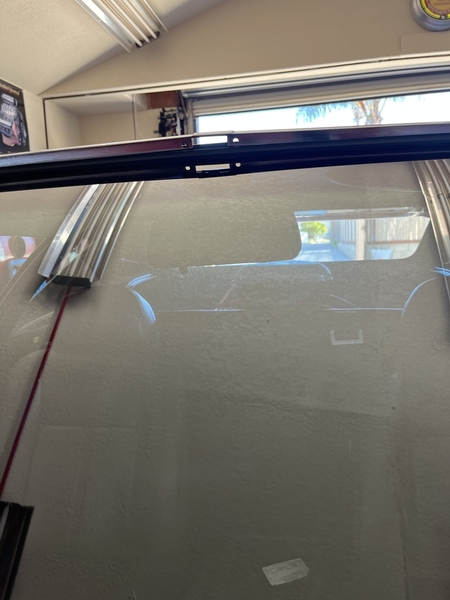
Replies sorted oldest to newest
What shocks do you have in the car?
Do you have a front spoiler on the car?
The most likely cause of your odd handling at speed is chassis flex in the rear. That’s why it’s so scary; the rear wheels are steering the car.
140 mph is about the time front end lift begins to raise its ugly head with a stock Pantera. If that is going to be in your normal spirited driving routine, a spoiler should be on your purchase list.
I like this one from Dennis Q made of ABS plastic and much more forgiving than his fiberglass version. Nonetheless, damage happens and they only seem to last me 5 to 7 years. This was during installation and there is still some protective masking tape in place
your windshield trim is likely not an easily corrected problem. 🙁
The trim has a small J hook at the very bottom that indexes into the rubber gasket. Proper installation is to install gasket to glass, carefully and firmly install chrome trim and then install as a unit. Once the unit is installed the tension on the rubber gasket will usually prevent resetting loose trim such as yours. It may push down but getting it to actually latch the J hook is difficult
I would lubricate with a spray tube silicone can and then cross your fingers, attempting to reset - at the same time - from both outer ends of the problem area
Good luck
Larry
Attachments
They look like stock shocks with no adjust ability and no front spoiler. I think some new shocks are in my near future. Any suggestions?? Are the J hooks visible in the pick?
As for the J hooks pretty sure you can answer that question better than us. If you can see the bottom of the trim then you should be seeing the J hook
Scott from SACC is very knowledgeable and sells good quality shocks.
Old shocks can get sticky and behave in a nonlinear way. Front end lift and old shocks can lead to instability at speed.
If one of the front shocks was not rebounding at the same rate as the other I see how that would make the car behave like that.
… but what could cause odd handling AND your windshield trim to pop out? Chassis flex! Jack up one rear wheel. If your deck lid doesn’t line up properly with one corner off the ground, that’s your problem.
I don't have that much Pantera specific experience and my project isn't on the road yet. Most of my experience is with race cars. I have read that P-cars do suffer from some chassis/body flex. Does a rust free car in good condition flex that much? Evaluating the chassis, I can see why there is chassis flex, especially with wide tires and lots of hp.
We found chassis flex caused unpredictable setups and compromised transitional behavior during cornering. I agree with David 100% about how diabolical unwanted rear steer is. We went to great lengths to eliminate rear wheel steer. Make sure your rears never go to toe out through their travel. If chassis flex causes that then that's a problem.
Good shocks are huge in chassis dynamics. If you are building a high speed car, don't overlook the spring/shock system and aerodynamics. I'm sure a flexible chassis doesn't help.
You will get lift at those speeds and you need to realize that a chin spoiler will help BUT what you are describing is also a cross wind scenario.
Put in double adjustable shocks and lower the car as much as you practically can in the front. The new springs and shocks will be stiffer then the stock ones ever were and will probably reduce the suspension travel up and down somewhat which will help reduce the bump steer you probably are experiencing as well?
IF you are still running the stock shocks most likely the 1" spacer doughnuts are still on them.
Removing them absolutely will help some. If you do. Measure the ground clearance that you do have now under the radiator support. That's as low as you dare to go and you might even want to consider mounting a skid plate there as well so you don't get "hooked" on something.
Then go back and check that you have sufficient toe in both front and rear. 3/16" to 1/4" total is a good number to aim for.
IF you intend to drive the car more at those speeds then you had better do a "bump steer" change check. It's possible that the pulling to one side or the other suddenly is "bump steer" caused by a sudden toe out in the suspension travel at one point.
That could work out since you will be removing the springs and shocks for new ones and you need to do that to check the bump steer changes. You HAVE to know that to understand what you are dealing with.
Also be aware that at that speed the aerodynamics could push the car down or up. When you get lift in the front it isn't smooth. It's sudden and it's a little like a speedboat's nose bouncing on the water AND the car can steer itself left or right like bump steer would. You don't want to be chasing the wrong solution.
You can only calm the car down so much, then you either have to live with it or decide that the car has a speed limit...or you do. It's not a simple solution there to anything.
The encouraging thing is that the basic design is quite capable of running over 170 or more with relatively simple "improvements" to the production settings. How high is up is difficult to say but I personally would be staying away from envisioning anything near 200mph. The car MIGHT be capable of it but I am not. That is professional racer territory and you just can't go out causally and expect to do it.
This is a good thread that covers quite a bit, all relevant to high speed stability. It boils down to chassis dynamics and aerodynamics.
Doug mentioned bump-steer and ride height, both important.
MJ mentioned the diff. It can change the car's off throttle, part throttle and full throttle handling characteristics. We would adjust our diff for desired results.
Unless you're not moving, chassis dynamics come into play. The higher the vehicle speed the more amplified the effects are.
Please dial in your car at a controlled place. Decent low-mid speed behavior doesn't necessarily equate to a good, safe high speed ride.
Mike, all good points.
When I read the initial posting, I couldn't help but wonder what kind of tires are on the car? If anyone is going to drive their Pantera on public roads at 140 mph, you better be damn sure everything is in perfect condition.
Tires and rear differential: You reminded me that the nature of the rear differential REQUIRES the circumference of both rear tires to BE WITHIN 1/4" DIFFERENCE! So you should EXPECT to match the tires like race teams do or suffer the consequences.
What does that mean? Well, you can "confuse" the traction lock unit and you do not want unpredictable transference of drive from one side to the other.
I'm saying what MJ said in a different way about the rear.
The more traction that you have in the rear, the more you need to consider race type chassis bracing. What you need to do to it, you are going to have to talk to someone who seriously races a Pantera.
The other thing with unbalanced rear tires is you WILL burn up the discs in the differential.
You have to remember the design parameters of this car are from 1968. It is not a GT40. It was never considered having over 500hp. The size of even the street treads now were never considered for a street car going that fast then.
Don't forget that race tires are almost always fresh for each race and depending on the longevity are changed several times during that race.
That WAS a pretty blue car. ANY of these items can be lethal.
Sometimes ridiculously stupid things happen at high speed. What I did was move the wipers to the '74 mounting position so that WHEN they suddenly popup at speed, at least it isn't right in my view point. I NEVER expect that simply because I am concentrating on the road. It always startles me and that can cause an over reaction. It's just a stupid thing that happens at speed.
That blue car was wadded up, did the guy make it out alive?
@Donny Dotson posted:That blue car was wadded up, did the guy make it out alive?
Yes! He was very fortunate! I believe he suffered a broken collar bone and some broken ribs, maybe even a punctured lung.
While my Pantera has a Grp 4 style front air dam and side skirts, I can do the standing mile to 170+ MPH with no stability problems. When it comes to doing 160+ on an open road for 90 miles (SSCC) things get a little twitchy. I believe that the road surface is a contributing factor. Certainly not like a race track.
Most of us don't get to drive at high speeds frequently. I found myself being tense at the beginning of a race and have to tell myself to take a deep breath and relax. It makes a big difference.
I remember a quote from Bobby Unser saying that he wouldn't get on a track with amateur drivers. He said they were not over the condition of driving on Adrenalin yet and that made them very dangerous.
In my thirties, I used to race a 2-stroke kart. The 16 year olds that I competed with had the same adrenalin problem. This, coupled with Daddy funding/fixing the kart, was a dangerous combo.




